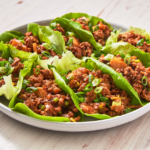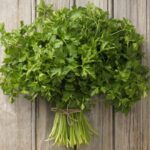The keno diet or ketogenic diet, named for the metabolic reaction it causes in the body, is a dietary strategy for weight loss, rich in fat and very low in carbohydrates, whose objective is to provoke an organic reaction that favors weight loss, specifically fat loss. Although this diet may seem like a novelty, it is not, because it has been around for years, it is used in sports to achieve certain performance goals, but its application is controlled and supervised. However, due to its characteristics, it is not recommended to practice it for a long time, nor to use it by anyone, since it subjects the body to an extreme situation, something that not all organisms tolerate in the same way, and especially when suffering from certain diseases or deficiencies. Food, as it can become a serious health problem. Despite everything we have told you, this diet should never be followed on your own.
We think you should know all the information we collect so you know what the keno or keno diet is (food, weekly menu and contraindications).
What is the keno diet?
The ketogenic diet or Kato is a weight loss method that reduces carbohydrates to the maximum, replacing them with foods rich in healthy fats and proteins, to achieve a reaction of the body called ketosis. Ketosis consists of the metabolic response of ketone bodies to the lack of reserves, whose main source is glucose. Ketone bodies are chemical compounds (specifically acidic substances) that are produced by liver cells and are an emergency fuel from fat waste, they appear just when the body needs energy, but cannot get sugars to produce it.
And how does the vegan or non-vegan ketogenic diet work? Well, in principle, only carbohydrates are reduced to the maximum (less than 20 grams per day) and the consumption of proteins (1.0-2.0 grams) and healthy fats is increased. In addition, it is usually accompanied with exercises, as this speeds up metabolism more quickly, and, consequently, weight loss. Does this diet work? Yes, when done correctly, that is why there are many athletes who practice it and scientists who study its possible medical uses. However, this dietary strategy to lose weight and any other that uses the state of ketosis, have important restrictions on their use that is why you must take it into account to avoid serious damage. The main warnings are the following:
- It cannot be done for a long time.
- It is not suitable for any individual.
- You need medical control.
Forbidden foods on the keno diet
Perhaps now you are thinking about how to start the keno diet, because the first thing you should do is receive your doctor’s approval, it will surely require some laboratory tests beforehand to know if your body can withstand it. Once the diet is approved, the doctor together with a nutritionist or a nutritionist should tell you how long you can practice it and some tips to do it correctly.
To get off to a good start, you must follow a previous stage of adaptation, that is, slowly and progressively eliminate carbohydrates from your diet before completely submitting to this diet. As you already know, restricted foods are almost all carbohydrates with very specific exceptions, we will detail them below:
- Cereals and starches. Avoid any of these products and their derivatives regardless of whether they contain gluten or not. Includes bread, pastries, flour, pasta, rice, corn, etc.
- Sugar free diet food. These products affect the levels of ketones in the body due to their high level of sugar, in addition to being highly processed.
- Alcoholic drinks. These products are high in carbohydrates, which is why they are added to our list of restricted foods.
- You can only consume: berries, such as: strawberries, raspberries, blackberries and blueberries (although the latter moderately), the rest are restricted. Remember that on the vegetarian ketogenic diet you can only eat less than 20 grams of carbohydrates per day. In any case, if you prefer vegetables, you can consume more of them and obtain a greater variety of nutrients.
- Foods with added sugars. Avoid cakes, juices, sweets, sodas (soft drinks), ice cream, milkshakes, juices, etc.
- Vegetables and tubers: They can consume all except sweet potatoes (sweet potatoes), potatoes (potatoes) and similar vegetables.
Foods allowed on the keno diet
Now that you know what foods are prohibited, you just need to know what you can eat on the keno diet. As we have already mentioned before, this diet is based on a menu composed mainly of fats and proteins, in this sense, the recommended intake would be approximately 1.0-2.0 grams of protein per kilo of body weight for most people. If we compare that amount of protein with the normal recommended intake for an average sedentary adult, calculated at 0.8 grams per kilogram of body weight, then there is a considerable increase in protein.
These are the foods allowed on the keno diet:
- Any type of meat.
- All fish, but especially the blue ones.
- Eggs (both white and yolk).
- Whole dairy products, especially the fatty ones (cured cheese, cream, cream, etc.).
- Vegetable creams and pates of nuts (tahini butter, peanut butter, almonds, etc.)
- Whole or ground seeds (sesame, chia, flax, pumpkin, sunflower, poppy, etc.).
- Vegetable oil (olive, rapeseed, sunflower, seed, etc.).
- Cocoa and pure chocolate (without sugar).
- Coconut and products derived from it (flour, oil and milk).
- Nuts, preferably those with higher fat content.
Weekly menu for keno diet
If you plan to put this diet into practice, we propose a series of vegan and vegetarian keno recipes, but first we recommend that you show it to a nutritionist or nutritionist, so they can make the adjustments they consider necessary and better adapt it to your specific nutritional needs. (If you are a sedentary person, an athlete, etc.), and consequently achieve better results. We attach an example of keno diet:
Monday
- Vegetarian keno breakfast. Baked avocado with ham and cheese accompanied with a sugar-free infusion or keno coffee.
- Sugar-free infusion and a handful of toasted pumpkin seeds.
- Turkey curry (only 120 grams of the bird and in the garnish eliminates the corn).
- Afternoon snack. A sugar-free infusion and cloud bread spread with peanut butter.
- Cod omelet (uses only 2 eggs) and a sugar-free infusion.
Tuesday
- Choose between a cod omelet and a keno cheese omelet (remember all egg preparations that do not exceed 2 units).
- A handful of toasted or raw almonds.
- Salmon with quinoa (uses only 120 grams of protein).
- Afternoon snack. Cloud bread with avocado or pork cracklings.
- Kato pizza with butter chicken or salmon accompanied with steamed broccoli with garlic.
Wednesday
- Avocado and spring onion omelet (uses only 2 eggs) or mushroom omelet.
- A handful of raw or roasted nuts with curry.
- Avocados stuffed with chicken or fish baked with oil and lemon served with broccoli, ham and cheese
- Afternoon snack. Light chocolate gelatin (you can consume 1 or 2 portions) and a sugar-free infusion.
- Mushroom scramble with shrimp and egg (uses only 2 eggs) or shrimp skewers (only 120 grams of protein) accompanied by sautéed spinach with garlic.
Thursday
- Healthy burritos and a sugar-free infusion.
- 1 slice of ham and 1 slice of cheese rolled in one piece or pork cracklings.
- Chicken round stuffed with vegetables (consumes only 120 grams of protein) or tuna salad with a tablespoon of mayonnaise.
- Afternoon snack. Unsweetened Greek yogurt with sunflower seeds (pipes) or celery sticks with guacamole.
- Salmon and avocado tartar or chicken skewers (120 grams of protein) accompanied by avocado salad.
Friday
- Healthy burritos or scrambled eggs with sausage and a sugar-free tea.
- Kato garlic bread or a handful with almonds and a sugar-free infusion.
- Oven gratin chicken breast served with quinoa salad. Option 2: beef wire and green salad.
- Afternoon snack. Cloud bread with pieces of avocado or two rolled slices of cheese.
- Tuna burgers accompanied with pieces of avocado.
Saturday
- A cloud bread (Kato bread) accompanied with tomato and olive oil or some barbecue tacos (120 grams of protein but without tortillas) and complements either of the two options with a sugar-free infusion
- A handful of nuts and a glass of unsweetened milk or low-calorie gelatin (1 or 2 cups).
- Sautéed meat with mushrooms or a lamb’s lettuce salad with chicken.
- Afternoon snack. Light cheese flan or a handful of almonds. Either of the two alternatives accompanies them with a sugar-free infusion.
- Envy stuffed with salmon and avocado or some beef fajitas with vegetables accompanied by 3 tablespoons of guacamole.
Sunday
- Spinach and goat cheese omelet or vegetable omelet, and to drink an infusion without sugar.
- Greek yogurt bathed in sunflower seeds (pipes) or keno coffee or bulletproof coffee.
- Baked sardines (with parsley) accompanied by steamed broccoli with garlic or tomato and avocado tartar. Another option would be a grilled fish fillet accompanied by avocado salad and prawns plus steamed broccoli.
- Afternoon snack. Chia and cocoa pudding or sugar-free gelatin (1 or 2 cups).
- Kale sautéed with garlic and onion and smoked tofu or broccoli with ham and cheese.
Contraindications of the keno diet
When the body presents a disorder or disease, we feel compelled to change eating and lifestyle habits to compensate or balance that condition. In these cases, the body has new needs to cover and no longer reacts in the same way as a healthy body in certain situations. In this sense, a drastic change in our diet without proper medical approval can aggravate or complicate any existing medical condition.
Now, when we talk specifically about the keno diet, due to its demands and the reaction it requires from the body for its effectiveness, it is not recommended for certain people with diseases:
- Metabolic diseases (for example, diabetes mellitus).
- Hormonal problems.
- Eating disorders (ED).
- Disorders related to the liver, kidney or pancreas.
Keno diet side effects
Apart from the ketogenic diet to lose weight, there are other similar diets also based on the state of induced ketosis, through a drastic reduction in the intake of carbohydrates, among them are the Paleolithic or pale diet, the Atkins diet and the Duran diet. In all cases, it is very important not to prolong the state of ketosis for a long time, as it can produce a significant imbalance in the body.
Why does this happen? Well, when ketosis reaches extreme levels, it becomes ketoacidosis, a state where the pH of our blood decreases, and, consequently, it acidifies, causing side effects. That is why we think it is important that you pay attention if you feel these symptoms, and, if you manifest any, do not hesitate to consult your doctor:
- Bad breath.
- Very dark urine.
- Strong sweat.
- Dizziness
- Muscle weakness (caused by loss of muscle mass).
- Low mental performance.
- Low appetite.
- Nutrient deficiency (calcium loss).
- Increased cholesterol.
- Heart problems (arrhythmias).
- Digestive problems (diarrhea or constipation).
- Kidney discomfort.
And, if the doctor recommends you not to follow this diet and you prefer to carry out another method, we present this article on the Tips to lose weight without a diet. We offer you all the keys to put them into practice!



